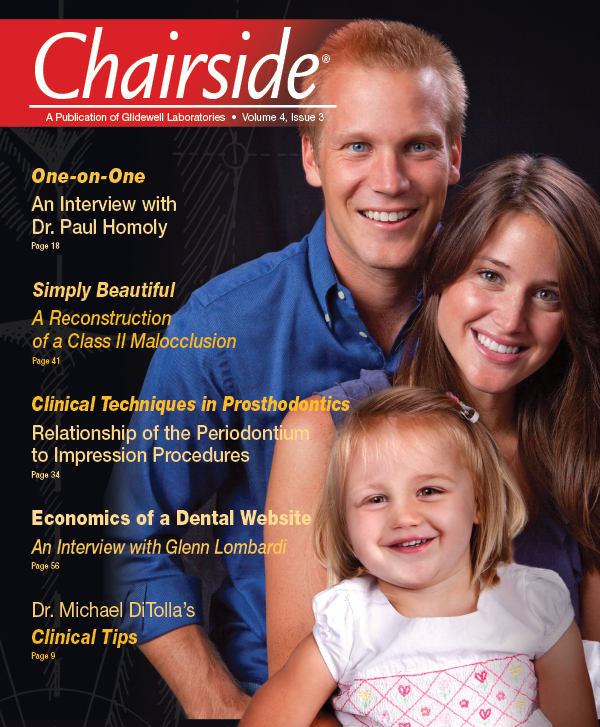Creative Uses for Topical Anesthetic
I try to be as pain-free as possible in all aspects of dentistry. Once the patient and I know that we have profound pulpal anesthesia, we can relax. This helps me to do the best dentistry I can for that particular day. To achieve that type of profound anesthesia in a painless fashion is the pinnacle of patient-friendly dentistry. For years, I have been using a strong topical to achieve a painless injection. At my lectures, dentists have told me about their uses for this topical gel.
PFG gel, formerly Profound, is a custom-compounded topical anesthetic available by prescription from a compounding pharmacy in California (Steven’s Pharmacy; 800-352-3784 or stevensrx.com). I use this gel in conjunction with the STA™ System (Milestone Scientific; Livingston, N.J.) to give what I think is the most painless injection available in dentistry today.
Like most of you, I see many patients who need only one crown done in a lower quadrant. For these patients, I no longer give lower blocks. I selectively anesthetize individual lower molars. Patients absolutely love this technique. I like it too because I do not have to give lower blocks and then wait for them to work, or deal with the 15% to 20% of times when I do not achieve complete anesthesia.
On those occasions when I do not achieve complete anesthesia, I resort to this technique. By doing so, I cut out the middleman (the lower block) and get right to immediate and profound anesthesia for mandibular molars. (For more on the Rapid Anesthesia Technique, click here.)
A few months ago, I went through my emails to chronicle the interesting ways dentists are using PFG gel. Certainly, the most common use is as a preanesthetic topical anesthetic. I use PF Lite, formerly Profound Lite (Steven’s Pharmacy), if placing the topical in the vestibule. I use PFG gel if the topical is being placed on attached tissue.
As a preinjection topical, a small amount is applied to a cotton-tipped applicator, which is placed on moist mucosa for 60 seconds and then rinsed off. A few patients might feel a pinch when the needle is inserted through taut tissue.
❯ A dentist in Michigan wrote to me that he uses PFG gel to place mini-implants without an injection. As he pointed out, there are no nerve endings in bone. He said that, with the small diameter of the implant, there is much less vibration during placement. He places PFG gel on the alveolar tissue for three to five minutes prior to placement of the mini-implant.
❯ An orthodontist in Washington recontours tissue with a diode laser without having to give an injection. Of course, he won’t give an injection. That’s why he became an orthodontist! He places PFG gel on the excess tissue with a syringe for approximately four minutes, then rinses and removes the excess tissue. This orthodontist also has done three or four labial frenectomies with just the gel.
Several dentists mentioned placing PFG gel on the palatal tissue to pack cord rather than giving the palatal anesthesia. A couple of dentists mentioned that, on endodontically treated teeth, they do not need local anesthesia. These dentists use the gel around the entire prep to pack cord without an injection.
A dentist in Minnesota places the gel around a tooth that needs a rubber dam clamp to extend subgingivally. This dentist also uses it for all primary tooth extractions to avoid injections. This is something I did with my three children when they did not want me to touch their loose teeth.
A dentist in California uses the gel in the syringe to anesthetize dry sockets prior to removing and repacking a dressing. This same dentist also places the gel on sutures to be removed, in order to make the appointment more comfortable for the patient.
Several hygienists wrote to say that they use the gel as part of scaling and root planing procedures, in states where hygienists are not allowed to give anesthesia. They also mentioned using it for deeper pockets on patients who are otherwise having just a prophy.
For patients who are sensitive during prophies, we have them rinse with DYC rinse, formerly Cyclone (Steven’s Pharmacy), for 60 seconds. This anesthetizes all of the patient’s tissues. DYC is available from the same compounding pharmacy as the gel.



